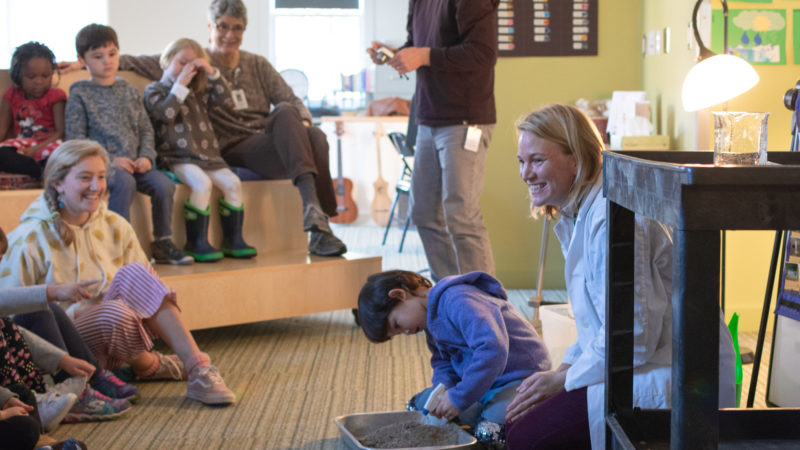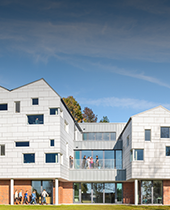Early Childhood students learn about the science behind waterfalls
Middle School teacher Katrina St. John visited the Lower School’s Early Childhood program yesterday to teach the school’s youngest students about the science behind waterfalls.
The concept of an “emergent curriculum”—an essential aspect of the Reggio Emilia Approach—comes into play throughout the school year, with 3-and-4-year-olds literally deciding what they will study. “Our students feel great ownership of our classroom, in part because our curriculum is driven by their ideas, questions, and interests,” says teacher Bob Mills. “Their natural engagement in the content allows them to deepen and refine skills such as language, math, science, music, geography, and art—without losing their excitement for learning.” Students selected waterfalls for the first area of in-depth study this academic year.
Waterfalls are generally formed as a result of erosion. To help explain the concept, Katrina demonstrated how rain, waves, wind, and rivers cause land to erode. She helped the class create their own waterfalls. Students began by building a mountain out of sand with a layer of harder rock embedded in the sand. With the addition of water, erosion caused a waterfall to form. The softer sand on top eroded away and left the harder rock, over which a waterfall formed. Early Childhood students will try out the erosion demonstrations for themselves in the classroom.
This is Katrina’s second visit to the EC classroom this year, having already visited earlier in October to provide an overview of the water cycle: precipitation, evaporation, and condensation.




